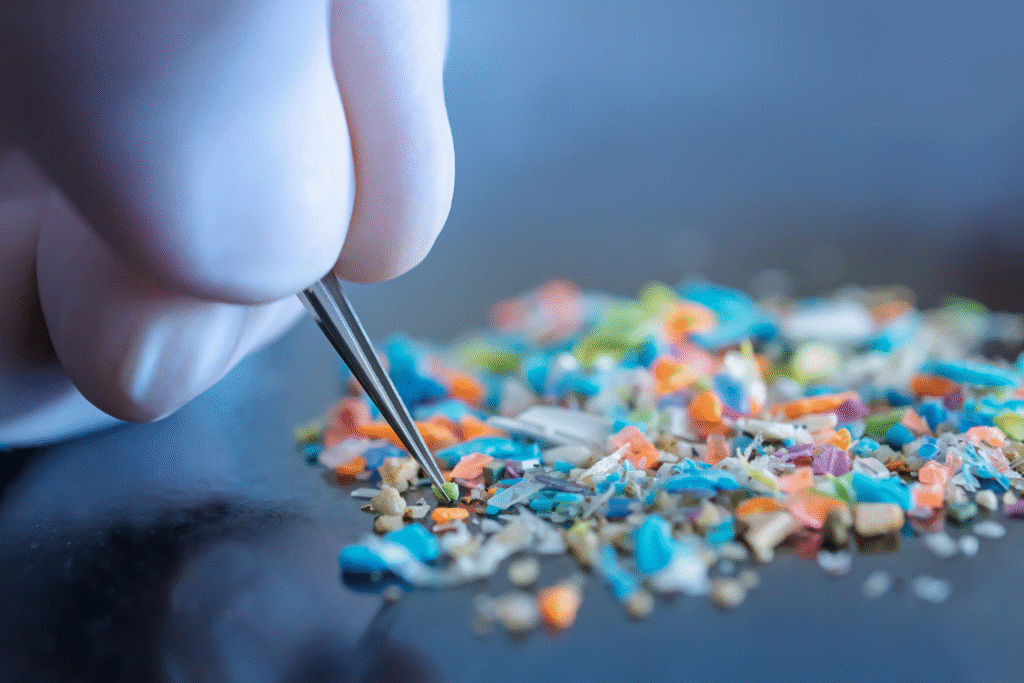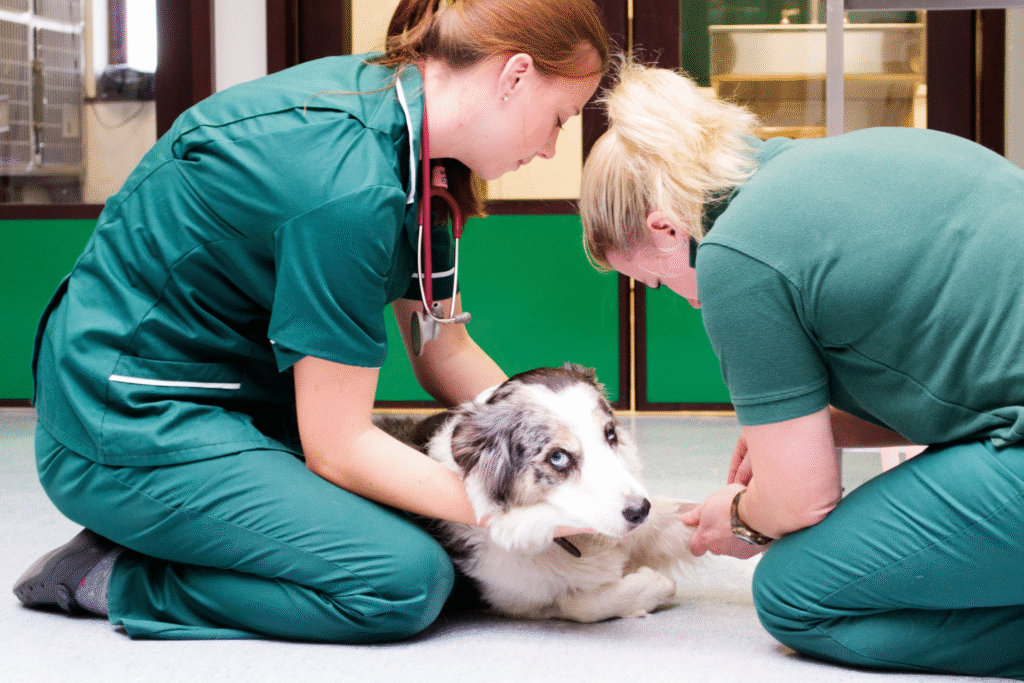Tiny plastic particles turn up inside family pets.

It sounds unsettling, but recent research shows that our dogs may be carrying more than just tags and toys—tiny fragments of plastic are turning up in their organs, and that could mean serious health risks. As these particles sneak into tissues once considered protected, the scale of exposure begins to feel too large to ignore. While science is still working out exactly what these plastics do to animals, the fact that they’re everywhere inside our pets raises new questions about environment, health and how we share spaces with animals.
1. Researchers found microplastics in canine testicular tissue.

A study analyzing testicular samples from dogs found microplastic particles in every single case examined, according to results published by the University of New Mexico researchers. They tested tissue from 47 dogs and detected 12 types of microplastics, with average levels around 122.63 micrograms per gram of tissue in dogs. The presence of plastics deep in reproductive organs turned up in locations once thought safe from environmental debris.
The findings are worrying because the testicular tissue is intimately involved in hormone production, reproduction and long-term health. If microplastics can penetrate there in dogs, it raises questions about accumulation in other organs too. For dog owners this means what we consider “pet safe” environments may need to be reconsidered, especially in urban or highly contaminated areas.
2. High pollution levels of specific plastics link to organ weight changes.

In the same study researchers found that certain polymers, such as PVC and PET, were negatively associated with testis and epididymis weights in dogs, as stated by Weill Cornell Medicine. Dogs with higher concentrations of those plastics had smaller normalized testis weights and lower sperm counts. The correlation doesn’t prove cause, but it suggests the presence of microplastics might affect the tissues they inhabit.
When organs shrink or operate under pressure, the animal’s overall health can suffer in ways owners may not immediately notice. Reduced reproductive organ size or compromised function could lead to long-term vulnerability. For pets living in polluted environments, the cumulative burden of tiny plastic particles may become part of a quiet health decline over years.
3. Canine findings mirror human tissue contamination levels.

The same research team compared dog tissue to human testicular samples and discovered similar polymer types in both species, as reported by Medical Brief. Human testicles averaged nearly three times the level of microplastics compared to dogs. While the focus here is dogs, the crossover highlights how pets share our environment and may serve as early indicators of broader exposure.
This mirror effect adds urgency to the issue. If dogs living in homes with humans show high levels of microplastics in organs, then the environmental pathways might be affecting all life living in that environment. Owners who shelter and care for dogs may need to think about indoor air quality, outdoor exposures and the hidden burdens carried by their companions.
4. Microplastics reach organs via ingestion, inhalation and passage through tissues.

Dogs can pick up microplastics in multiple ways: licking floors, inhaling dust, drinking water, and eating contaminated food. These pathways allow particles to migrate into the bloodstream and ultimately deposit inside organs. Once inside, they may lodge in tissues where clearance is difficult. Chronic low-level exposure becomes especially concerning when particles accumulate over time.
Because dogs live close to the ground, sniffing and exploring surfaces humans might ignore, they may inhale or ingest more particles relative to their size. This increased contact gives microplastics more chances to settle. Owners might need to reconsider how we manage indoor environments, especially surfaces and air quality, to reduce the hidden risks.
5. Organs like liver, kidney and lungs may also contain microplastics.

Although the primary study focused on testicular tissue, other research points toward broader organ contamination. Microplastics have been found in kidneys, livers and lungs of animals exposed to high plastic burdens. These organs filter blood, detoxify substances and manage waste, so plastic fragments lodged there could disrupt normal function.
When foreign particles become embedded in filtering organs, inflammation, scarring and altered metabolism may follow. For dogs, that could mean subtle but cumulative impacts: slower healing, increased sensitivity to toxins, or reduced resilience. The bigger picture suggests microplastics are not just surface contaminants but internal burdens with possible consequences.
6. Age, environment and breed may influence plastic accumulation.

Preliminary data suggests younger animals, pets living in urban high-pollution zones, and breeds with heavy indoor-outdoor transitions may show higher microplastic burdens. Animals spending time near traffic, industry or heavily used rooms face greater loading of particulate matter and fibers. Environmental risk factors are emerging as key variables in this research.
For individual dog owners this means location and lifestyle matter. A pet living in a busy city center may not face the same exposure as one in a rural area with cleaner air and fewer synthetic particles. Mitigating exposure through indoor filtration, limiting outdoor pollution contact and choosing cleaner zones could become part of pet care strategies.
7. Veterinary medicine is beginning to study health implications of microplastics.

Veterinary researchers now consider microplastics alongside toxins, allergens and pathogens when exploring unexplained conditions in dogs. Issues such as reduced fertility, chronic inflammation, and unexplained organ dysfunction are being looked at through the lens of plastic particle exposure. As the research base grows, vets may integrate plastic burden checks into broader wellness screening.
Though the evidence is new and not yet definitive, dog owners might notice changes in health patterns: longer recovery times, unresponsive allergic symptoms, or reproductive issues without clear cause. These may prompt questions about hidden environmental burdens rather than the usual suspects.
8. Pet industry and manufacturers face pressure to reduce plastic-derived exposure.

Given pets’ proximity to household plastics—food packaging, toys, bedding and synthetic fibers—the pet industry may need to rethink materials and exposure risks. Pet products often contain synthetic components that shed microfibers or fragments. Awareness of internal plastic burdens in dogs adds a new dimension to product safety and design.
Manufacturers may start marketing lower-plastic options, improved filtration systems in pet environments, and materials that shed fewer particles. For pet owners, this may translate into changes in how we furnish homes, choose toys and maintain flooring. The goal: fewer particles floating or settling where pets spend their time.
9. Owners can act to reduce microplastic exposure in their dogs’ environments.

While research continues, dog owners don’t have to wait to reduce risk. Measures like using air purifiers, choosing natural fiber bedding, minimizing synthetic carpets, and avoiding plastic toys that degrade easily help lower particle load. Outdoor walks could avoid high-traffic zones and synthetic turf areas. Every incremental change lowers the burden on your dog’s system.
These steps won’t guarantee zero exposure but they shift the balance. Reducing microplastic contact adds one more protective layer to your dog’s environment. In a world where tiny particles can accumulate unnoticed, minimizing exposure becomes one of the best investments in your pet’s long term health.
10. The finding transforms how we view environmental health for pets and people.

That dogs share microplastics inside their organs forces a rethink not only of canine health but of how humans and animals co-inhabit environments. If microplastics accumulate in pets, then shared indoor and outdoor spaces may carry invisible burdens for everyone. The implication extends beyond pets to families, homes and neighborhoods.
Understanding this hidden exposure may reshape how we design animal-friendly and human-health-friendly environments. Improving air, reducing plastics and monitoring internal burdens may become mainstream. For dog owners, the study is a reminder that the health of their companion reflects the health of the world around them.
